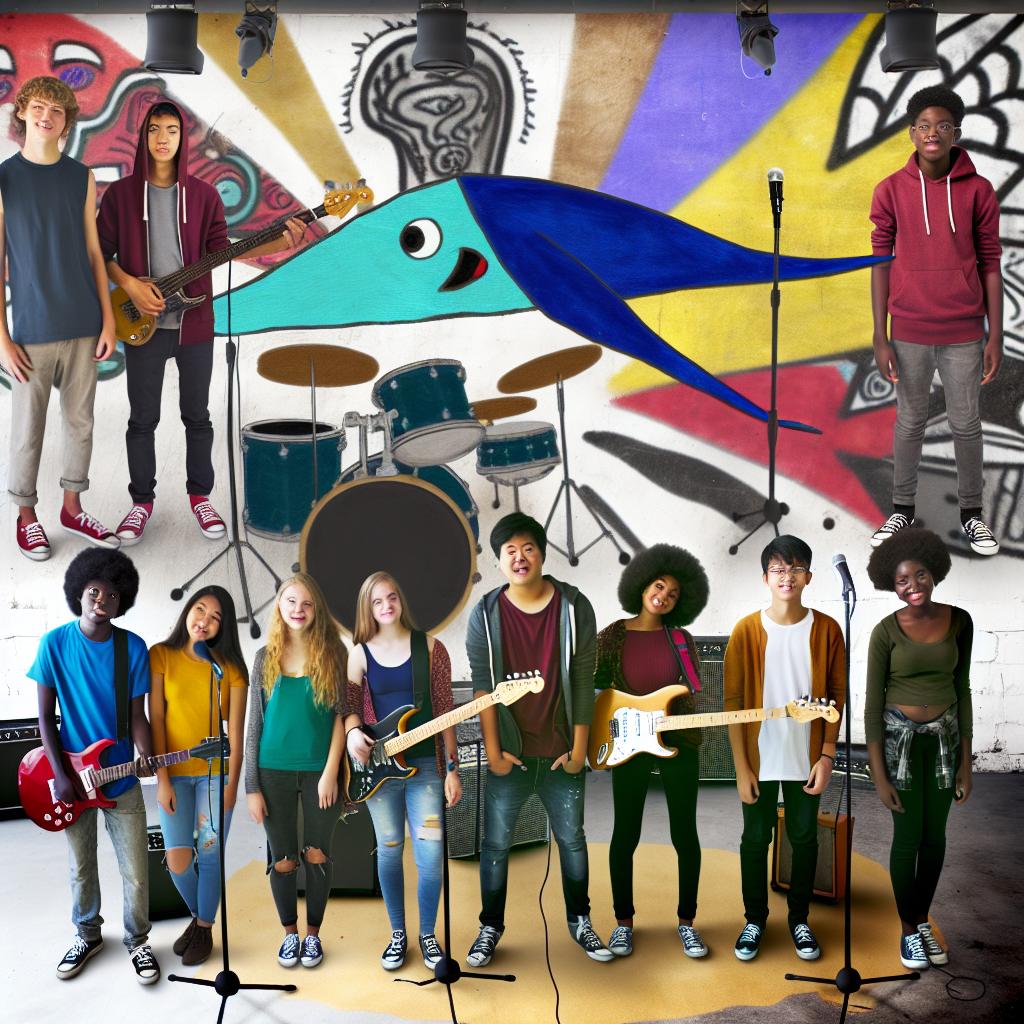The Evolution of Youth Anthems
The concept of a youth anthem has undergone significant transformation over the years, serving as a reflection of societal changes and the evolving values of successive generations of young people. These anthems are characterized by themes like rebellion, freedom, and self-expression, encapsulating the essence of youth in any given period.
Defining a Youth Anthem
A youth anthem generally refers to a song that resonates deeply with a young audience, often becoming a symbol of a specific cultural moment or movement. These songs typically address matters that impact young people directly, such as issues of identity, personal freedom, and transformation. While the specific themes may vary according to the era, the underlying message often involves sentiments of empowerment and unity.
Characteristics of a Youth Anthem
One of the defining characteristics of youth anthems is their ability to capture the spirit and mood of a generation. These songs often incorporate innovative sounds and lyrical content that echoes the real experiences of younger listeners. By doing so, they create an emotional bond with the audience, often catalyzing broader social or cultural conversations.
Early Examples
The roots of youth anthems are often traced back to the rock and roll era of the 1950s. During this period, artists like Elvis Presley and Chuck Berry produced music that not only challenged the prevailing societal norms but also inspired a new cadre of young listeners yearning for change. These pioneering artists set the tone for future decades, heavily influencing the trajectory of youth-focused music.
Impact of Rock and Roll
Rock and roll music introduced a new level of immediacy and vibrancy to the music scene. Its emergence paralleled shifts in social attitudes, emphasizing themes of youth rebellion and freedom. The genre was instrumental in bridging racial divides and promoting a more inclusive youth culture, with its anthems being some of the first to truly resonate across diverse young audiences.
The 1960s and 1970s
The 1960s saw the rise of a counterculture movement, which brought with it a fresh wave of youth anthems. Music by artists like Bob Dylan and The Beatles captured the spirit of change, protest, and rebellion. These songs often tackled pressing issues of the day, including civil rights and opposition to the Vietnam War, resonating deeply with a generation eager for transformation.
1960s Legacy
The 1960s established music as a tool for action, pushing the boundaries of what was considered acceptable in popular culture. Anthems from this period often blended poignant lyrics with pioneering musical techniques, creating a lasting legacy that influenced subsequent decades.
In the 1970s, punk rock burst onto the scene, offering a voice for disenchanted youth. Bands like The Ramones and The Sex Pistols wielded their music as a weapon of protest, directly challenging cultural and political norms through their raw sound and contentious lyrics. This era saw a stark shift from the idealism of the 1960s to a more confrontational and assertive form of self-expression.
Punk Rock Influence
Punk rock’s emergence marked a radical departure from previous musical norms, propelling a DIY ethos that empowered young people to take control of their artistic expression. This period underscored the role of youth anthems as not just reflections of the times but also as catalysts for change, encouraging community building and activism.
The Modern Era
In more recent years, youth anthems have continued to adapt, drawing influence from diverse genres such as hip-hop, pop, and electronic music. Artists like Kanye West, Beyoncé, and Billie Eilish have created songs that address contemporary issues pertinent to today’s youth, including mental health awareness, social justice, and equality. These themes continue to resonate due to their universal relevance and depth.
Role of Technology
With the current integration of technology and media into daily life, youth anthems are now more accessible than ever before. Platforms like social media and digital streaming services have facilitated the rapid spread of these songs across the globe, amplifying their impact and reach. Technology thus plays a pivotal role in shaping the production, dissemination, and consumption of modern youth anthems.
Moreover, digital platforms allow for a democratization of music, where artists can reach their audiences without traditional gatekeepers. This has led to a broader diversity of voices and stories being represented in the music landscape, reflecting a myriad tapestry of youth experiences worldwide.
The Impact of Evolving Youth Anthems
In an era characterized by rapid technological and cultural shifts, the evolution of youth anthems mirrors these changes, capturing the diverse challenges and aspirations shared by young individuals. As a dynamic and ever-changing process, the crafting of youth anthems continues to reflect the spirit of innovation and rebellion inherent to youth culture.
Connection Across Generations
Beyond simply entertaining, youth anthems serve as a powerful platform for expression and connection, linking generations through shared experiences and aspirations. By encapsulating the zeitgeist of each era, these songs become historical markers, providing insight into the cultural and social dynamics of their time.
Looking forward, as the landscape of music and youth culture continues to evolve, the role of youth anthems will remain indispensable. They will continue to capture the hearts and minds of young people, serving as a rallying cry for change, a call for unity, and a testament to the indefatigable spirit of youth.
In conclusion, the journey of youth anthems is a testament to the enduring power of music to reflect and influence the culture of the times. As each new generation comes of age, it will undoubtedly continue to produce anthems that express its unique voice and aspirations, ensuring the legacy of youth anthems remains ever vibrant and relevant.
